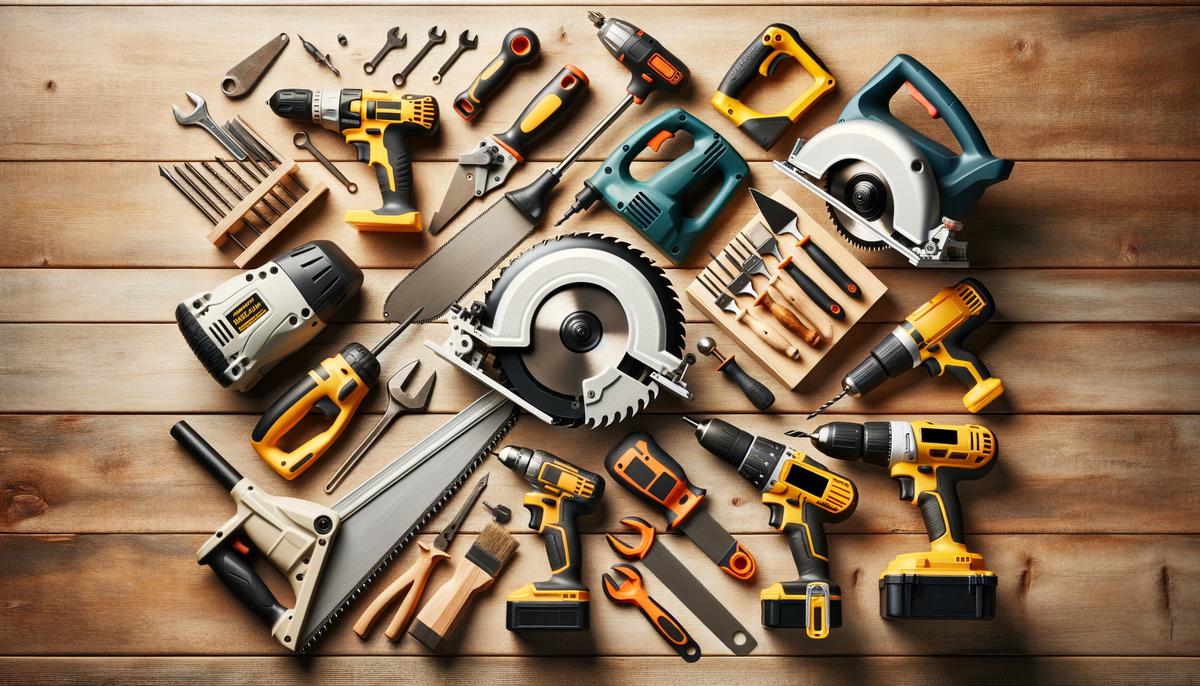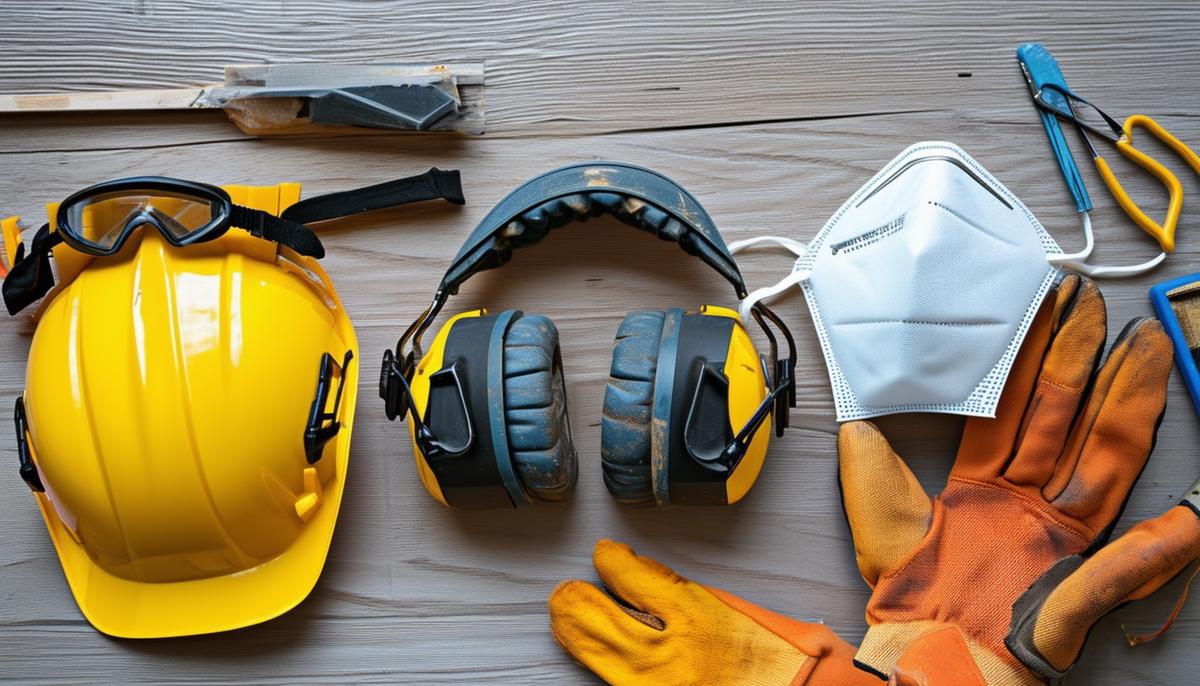Types of Power Tools
Common Power Tools in Carpentry
Circular Saw: Circular saws excel at making straight cuts in wood, metal, and masonry. They're essential for breaking down large sheets of plywood or cutting dimensional lumber. Available in corded and cordless versions.
Jigsaw: For cutting curves or intricate shapes, the jigsaw is invaluable. Its slim blade allows for maneuverability, making it ideal for cutting out circles or detailed patterns in wood.
Power Drill: Versatile tools that handle drilling holes, driving screws, and even sanding with the right attachments. Both corded and cordless options are available.
Impact Driver: Similar to power drills but with more torque, impact drivers excel at driving screws and bolts into tough materials.
Miter Saw: Miter saws excel at making precise crosscuts, miters, and bevel cuts in framing materials. The pivoting arm lets you fine-tune angles with precision.
Table Saw: Table saws are unmatched for precision when ripping large panels and sheet goods. Adjust the blade height and angle to make various types of cuts.
Router: Routers are excellent for hollowing out areas in wood. Use them for cabinetry and decorative edge work.
Belt Sander: Belt sanders quickly smooth out large, flat surfaces. Let the sander do the work to avoid gouges and uneven surfaces.
Planer: Planers are indispensable for thicknessing wood to create even panels. They shave off layers from the surface to ensure uniform thickness.
Nail Gun: Nail guns offer speed and precision in nailing. Perfect for framing, roofing, and cabinetry. Choose between pneumatic and battery-powered versions.
Safety Tips with Power Tools
- Read Manuals: Familiarize yourself with each tool's specifics.
- Wear Safety Gear: Use goggles, ear protection, and gloves.
- Check Tools Regularly: Inspect for damage and wear.
- Use Guards: Employ them to keep your fingers safe.
- Stay Focused: Avoid distractions while working.
- Proper Storage: Store tools correctly to maintain a tidy workspace.

Safety Tips for Power Tools
Use Appropriate Personal Protective Equipment (PPE): Wear safety goggles, ear protection, and sturdy gloves. These protect your eyes, ears, and hands from potential injuries.
Read Operator Manuals: Take the time to read the manual for each tool. You'll learn about safety features, correct operation, and required maintenance.
Proper Tool Maintenance: Inspect tools regularly for wear or damage. Clean them after each use and store them in a dry, cool place to prevent rust and deterioration.
Use Guards and Safety Features: Always use guards and safety features as directed. Never remove or disable these protective elements.
Stay Focused and Avoid Distractions: Give power tools your full attention. Keep your work area clear of unnecessary items that can cause you to lose focus or trip.
Use the Right Tool for the Job: Each tool is designed for a specific purpose. Using the correct tool makes the task easier and safer.
Keep the Workspace Clean and Well-lit: A clean, well-organized workspace minimizes the risk of accidents. Good lighting allows you to see clearly and avoid mistakes.
Don't Rush Through Tasks: Work methodically and take your time. Double-check measurements and preparations to ensure accuracy and safety.
Mind the Cords and Battery Life: Be aware of cord placement to avoid tripping or cutting them. For cordless tools, keep an eye on battery life to prevent unexpected power loss.
Secure Your Workpiece: Clamp your workpiece or secure it in a vise to prevent movement while working. This improves precision and reduces the risk of accidents.

Common Power Tools Explored
Circular Saws
Circular saws are versatile tools for both crosscuts and ripping. They handle various materials and offer portability, especially in cordless versions.
Using Effectively:
- Mark your cuts clearly with a carpenter's pencil and combination square.
- Set the blade depth just deep enough to cut through the material.
- Clamp your workpiece securely.
- Keep both hands on the saw and follow your line steadily for smooth cuts.
Jigsaws
Jigsaws excel at cutting curves and intricate shapes. They're lightweight and easy to control, making them ideal for detailed work.
Using Effectively:
- Choose the right blade for your material.
- Use slow, controlled movements for smoother cuts.
- Drill pilot holes for interior cuts.
- Guide the blade without forcing it.
Power Drills
Power drills are versatile tools for drilling holes, driving screws, and more. Did you know? The first portable electric drill was invented in 1895 by Wilhelm and Carl Fein in Germany1.
Using Effectively:
- Select the appropriate bit for your task.
- Adjust the torque based on the job.
- Hold the drill perpendicular to the work surface for straight holes.
- Use lower speeds for driving screws and higher speeds for drilling.
Nail Guns
Nail guns offer speed and precision for nailing tasks in framing, roofing, and cabinetry. They can drive up to 60 nails per minute, significantly faster than manual hammering2.
Using Effectively:
- Choose the right nail gun for your specific job.
- Load nails correctly following manufacturer instructions.
- Secure your workpiece before nailing.
- Always prioritize safety: wear protective gear and never bypass safety mechanisms.
Mastering these essential power tools boosts productivity and enhances work quality. Use them wisely to improve your carpentry skills.

Photo by www_erzetich_com on Unsplash
Choosing the Right Tool for the Job
Selecting the appropriate tool is crucial for achieving optimal results in carpentry. Using the right tool improves efficiency and ensures high-quality workmanship. Let's explore how to assess each task and pick the best tool for your needs.
Start by understanding your project. What's the goal? Is it a delicate trim job, heavy-duty framing, or something in between? The task's nature and complexity greatly influence your tool choice. Simple, lightweight tasks often require hand tools, while more complex or labor-intensive jobs benefit from power tools.
Hand Tools: For Detail and Precision
Hand tools are essential for tasks requiring finesse and a personal touch—like assembling furniture, fitting trim, or crafting dovetail joints.
When to Use Hand Tools:
- Delicate Tasks: For intricate designs or precision cuts, choose a chisel and mallet over a power router.
- Finish Work: Jobs requiring attention to fine details, such as sanding to a smooth finish or making minor adjustments, benefit from hand tools like sanding blocks or block planes.
- Quiet Work: When noise is a concern, using a hand saw instead of a circular saw can maintain peace without compromising quality.
- Close-Quarters Work: Hand tools are useful in tight spots where power tools might be too bulky.
Common Hand Tools:
- Chisels: Ideal for detail work and carving.
- Hand Saws: Suitable for small cuts and adjustments.
- Screwdrivers: Essential for precision fastening.
- Block Planes: Excellent for smooth, fine shavings and finishes.
Power Tools: For Heavy Lifting
Power tools bring efficiency to larger projects that hand tools can't match. From building decks to framing walls, power tools make heavy-duty tasks quicker and easier.
When to Use Power Tools:
- Heavy-Duty Tasks: For cutting through multiple sheets of plywood or 2x4s, a circular saw or table saw outperforms any hand saw in speed and efficiency.
- Repetition: Tasks requiring repetitive actions, like driving hundreds of screws, benefit from a power drill or impact driver to save time and reduce strain.
- Demolition: Power tools like reciprocating saws and oscillating tools are ideal for quickly and safely tearing down old structures.
- Large Scale Projects: When building a deck or framing a room, power tools like miter saws and nail guns allow for precise, consistent cuts and fastenings.
Common Power Tools:
- Circular Saws: For quick, straight cuts in large materials.
- Miter Saws: Perfect for precise crosscuts and angle cuts.
- Power Drills: Versatile for drilling and driving.
- Nail Guns: Efficient for framing and fastening.
Making the Decision:
Here's a simple way to decide between hand tools and power tools for your project:
- Evaluate the Task: Consider the scale, material, and precision required.
- Time vs. Energy: Assess your time frame and energy levels. Power tools can save time but hand tools can be worth the extra effort for finer work.
- Workspace: Consider your working environment. Tight spaces and noise restrictions can limit your options.
- Comfort and Experience: Use the tool you're most comfortable with, especially if precision is crucial. While power tools are efficient, they require practice to handle safely and effectively.
By thoughtfully selecting the right tool for each job, you can boost your productivity and achieve better results. Balance your toolkit with both hand and power tools, and you'll be ready for any carpentry challenge.
"The right tool for the right job makes all the difference in carpentry."
Did you know? The use of power tools in carpentry has increased productivity by up to 50% compared to traditional hand tools for large-scale projects1.

Mastering the right power tools can significantly improve your carpentry skills, making tasks faster and more precise. Equip yourself with these essentials, follow safety protocols, and watch your craftsmanship flourish. Remember, safety should always be your top priority when working with any tool, especially power tools.
| Tool Type | Advantages | Best For |
|---|---|---|
| Hand Tools | Precision, Control, Quiet | Detailed work, Finishing, Small projects |
| Power Tools | Speed, Efficiency, Consistency | Large projects, Repetitive tasks, Heavy-duty work |
Always prioritize safety: wear protective gear, read tool manuals, and maintain your tools regularly for optimal performance and longevity.
